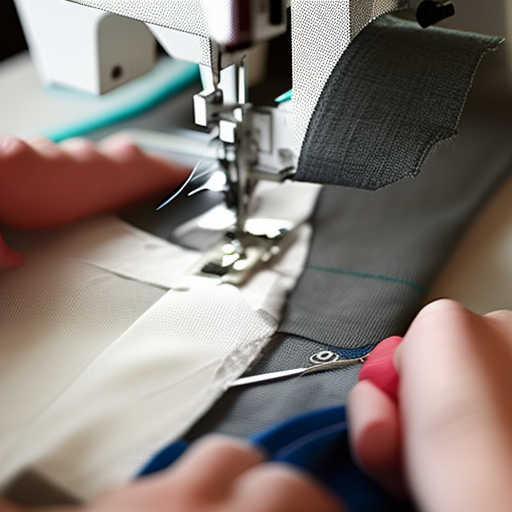Sewing construction techniques play a pivotal role in creating beautifully crafted garments and ensuring their longevity. Whether you are a seasoned seamstress or a beginner, having a good understanding of various techniques is essential for achieving professional results. In this article, we will explore some common sewing construction techniques that every aspiring sewist should master.
1. Proper Seam Finishing
Proper seam finishing refers to the techniques used to prevent raw fabric edges from fraying and unraveling. There are several methods to choose from, such as:
- Zigzag Stitch: This is the most basic method for finishing seams with a zigzag stitch along the raw edge.
- Overcasting: Overcasting involves using a serger or overcasting stitch to enclose the raw edge with stitches, preventing fraying.
- French Seam: This technique is used for lighter fabrics, creating a neat finish by enclosing the raw edge within the seam.

2. Setting in a Sleeve
Setting in a sleeve is a crucial technique when constructing a garment with sleeves. Here’s a step-by-step guide:
- Match the sleeve cap notches to the shoulder seams and pin in place.
- Ease the sleeve fabric between the notches and distribute the fullness evenly.
- Sew from the sleeve cap towards the armpit, ensuring smooth fabric feeding.
- Press the seam allowance and finish the seam.

Remember, practice makes perfect. Don’t be discouraged if it takes a few tries to master this technique!
3. Making Buttonholes
Creating buttonholes is a fundamental skill in garment making. Follow these general steps:
- Mark the buttonhole placement using tailor’s chalk or fabric marker.
- Select the appropriate buttonhole stitch on your sewing machine.
- Sew the buttonhole, ensuring it matches the marked length and width.
- Carefully cut open the buttonhole using a seam ripper or small scissors.
| Buttonhole Stitch Type | Usage |
|---|---|
| Straight Stitch | For lightweight fabrics and decorative buttonholes. |
| Zigzag Stitch | Ideal for medium to heavy fabrics. |
| Keyhole Stitch | Primarily used for tailored coats or jackets. |
4. Hemming Techniques
Properly hemming a garment ensures a polished and neat finish. Some commonly employed hemming techniques include:
- Blind Hem: The blind hem stitch is utilized to create an almost invisible hem on garments.
- Double-fold Hem: This technique involves folding the fabric twice, concealing the raw edge.
- Narrow Hem: Ideal for lightweight fabrics, it involves folding the fabric edge twice and stitching close to the fold.

Whether you’re making a dress, shirt, or pants, mastering these sewing construction techniques will elevate your sewing game. Remember to practice and experiment with various fabrics and garments to build your skills and confidence. Happy sewing!




